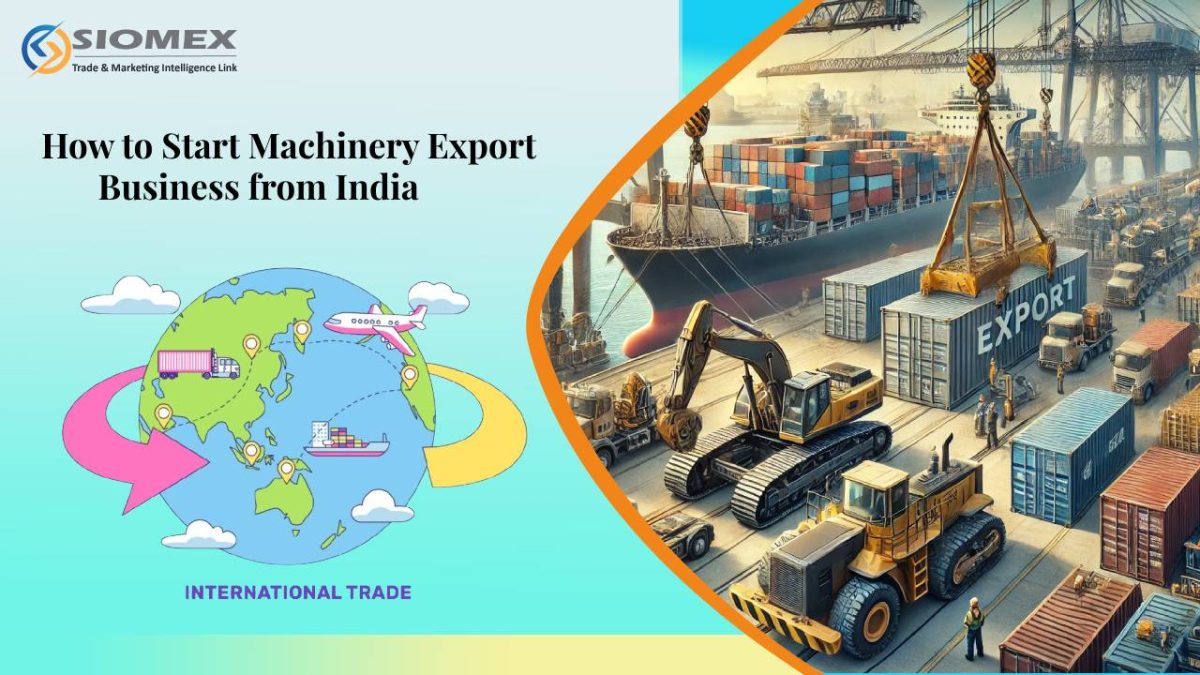
How to Start Machinery Export Business from India
The machinery export business can be a good business venture when starting it from India. Currently, India is a developing economy in the manufacturing sector and there are many types of machinery, which can be exported to the global market. If you have an interest in seize this opportunity, you should know how to proceed and the general steps when exporting goods successfully.
Now shall we take a look on the mechanics of how one can begin machinery export business in India in a format that is easy to follow?
Step 1: Do Your Research
The very first step you have to take is something many people overlook – research. Knowledge as to the international market for machinery is highly useful. Which type of machinery is popular? Who are the potential buyers? This information will help you to identify target customer segments and products to concentrate on.
There are many other online resources available namely, Siomex that are a trusted data source for import-export and help in getting information related to prospective markets. Siomex can provide you with such information as the global demand for your product, prices of your product, and other important features of the buyers.
Step 2: Register Your Business
It’s always recommended that before you start exporting, you should register your business locally. In India you need to get an Import Export Code issued from Directorate General of Foreign Trade abbreviated as DGFT. This is a code without which no company engaged in exporting or importing goods can survive.
Getting the IEC is as easy as walking baking bread in the village. One can having it done online through simple business profile input like pan card number, address proof and a bank account. The process is very simple, and after your approval you are legally allowed to export.
Step 3: Sale of Agricultural Machinery for Export: The Right Machinery to Choose
The next step is to select the appropriate machinery to export after preparing to venture into the business. You don’t necessarily have to export all of them—concentrate on the most saleable machinery across the world. Depending on whether the business will engage in sales of machinery for agricultural use, industrial use, construction equipment, among other uses, pick the type of machinery that the business is well equipped to deal with.
In turn, the buyer’s existing data will help Siomex determine what type of machinery is currently popular with buyers in various countries. This will enable you to meet the demand of the international market as articulated as here.
Step 4: Connect with Reliable Buyers
Now that you have an understanding of what machinery you should export, the next thing is to find the market. This can be cumbersome especially when an individual is new to the export business. Fortunately, there are websites such as Siomex that will offer you a list of potential buyers using the most current trade data.
The interested buyers can also be found through contacting the trade fairs, export organizations and online markets. These buyers need to be maintained in order for businesses to continue gaining their business over time.
Step 5: Set Up Logistics and Shipping
After making that first contact with the buyers, it is now time to start organizing your affairs. The shipping of machinery is delicate due to its size and weight, therefore proper planning has to be done. There shall be the need to hire professional packers and shippers that handle international shipment services only.
Make sure that one has met international shipping laws, specific countries may have restrictions to imported machinery. It is beneficial to involve a good freight forwarder in this process.
Step 6: Now, Compliance and Documentation
Exporting machinery require papers. You will need to guarantee that your machinery is doing so to the Indian standard and any other international standards. This implies obtaining some permits and some documents where one needs to fill at customs to clear them.
Some key documents include:
- Commercial Invoice
- Bill of Lading
- Packing List
- Certificate of Origin
- Documentation is crucial in that it prevents likely incidences of delay in the shipment of your machinery and delivery is seamless.
Step 7: Promote Your Business
For your business to expand you need to make sales thus having to properly advertise the machinery it exports. Establish internet presence, create business related website and join business related associations. Siomex can actually be useful in this case as well since it can tell you where the demand is and what the consumers are seeking.
Such a global reach is possible using social media and email marketing is also another common practice in marketing. Do not disregard the basics of forming a good relationship with buyers and trade partners: Getting to know one another will result in more sales and purchases.
Step 8: Get Financial Assistance
It should be noted that exporting of machinery may require a lot of capital investment. If you must invest in production, shipping, and other documentation requirements, you may start looking for funding. There are many a scheme run by the government and export promotion councils in India which provide financial assistance to exporters. Research for export incentives or export subsidies schemes as well as low interest export finance and funds available for your export business.
Conclusion
Export business of machinery from India is one of the best strategies of venturing overseas to expand the business. Accurate research, registration, and planning will create a good foundation for export operations once you are ready to go into the market. All the same, you aren’t left alone in this process; digital tools such as Siomex will assist you in compiling necessary trade data for searching for buyers and discovering opportunities.
To start, start now, you won’t regret the effort because you’ll be on the right track of owning a perfect export business ever.
